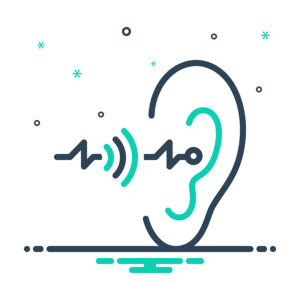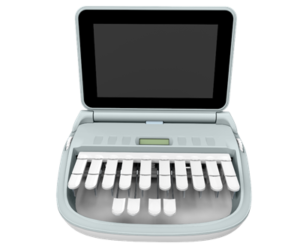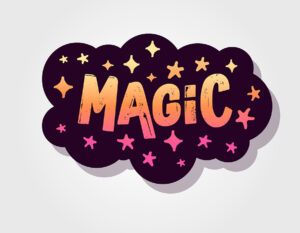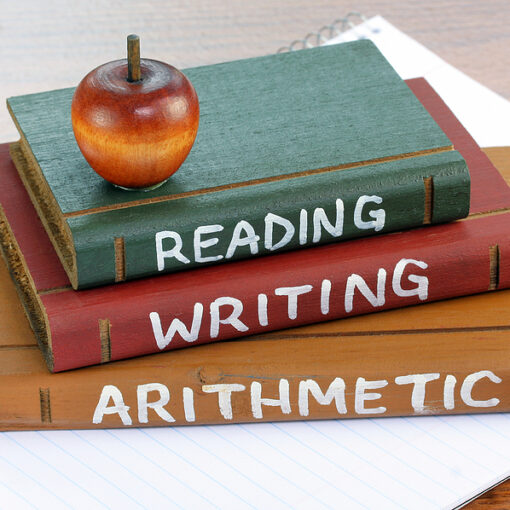A glamorous shot of women dressed in black (with furry wraps on a couple) caught my attention online. It turns out they were court reporters dressed up to show that they weren’t all sitting in a corner of a court room cramped over a steno machine. Further research produced another photo of women glammed up in long dresses for the Oscar awards. They were the 2017 Oscar Reporting and Scoping Team who worked behind the scenes to memorialize everything said at the event.

And that’s the thing. Even if people think they know what court reporters do, they don’t realize that court reporters do so much more. Yes, they create verbatim transcripts of trials (even military) and depositions, but also public meetings, closed caption transcriptions, speeches, press conferences, as well as private club, HOA and stockholder minutes —anywhere it’s necessary to have an accurate and legal record of what is said. By using stenography equipment to record what each speaker says, they create written transcripts of the proceedings.
Court reporters learn the trade in courses offered at community colleges or private schools where they learn machine shorthand. “It takes an average student about three years to reach the necessary speed for graduation,” said Melissa Gonsalves, owner of Alliance Reporting Solutions in Phoenix, Arizona. Gonsalves comes from a family of court reporters: her mother, aunt, and brother are court reporters as well.
She explained that the first six months is spent learning a new language: machine shorthand or steno. “This consists of learning the keystroke combinations that correspond to sounds of spoken English and memorizing thousands of keystroke combinations that represent frequently used phrasing in the English language.
“There’s 10,000 basic words, and my dictionary is now 250,000 words: thousands of keystrokes used for commonly used words and complicated medical and legal terms.” She said that they study English and vocabulary for two years. They also spend nine months on medical terms and nine months on legal terms, both Latin-based terminology. Although a key set of phrases, words, numbers, and sounds are used across 22 unmarked keys, it is also common for stenographers to develop their own dictionaries that include coded letter combinations that stand for common phrases, and they constantly add to their dictionary.

Stephanie Stearman teaches classes on court reporting and has done so since 1975. Currently she’s at Gateway Community College in Phoenix, Arizona. She’s also written two textbooks on the subject: Stearman’s Steno and Stephanie’s Brief Book for students and working reporters to improve their writing skills.
When I asked her about the length of time required for a person to become certified as a court reporter, she told me, “I’ve had students finish the program in one and a half years, and I’ve had students take six to seven years. It’s not like they take a course and, when it’s finished, go on to the next one. It depends upon the person, their natural ability, and the amount of time dedicated to practice. They can’t proceed to the next class until they pass their speed tests along the way. And with a 95% accuracy required, 94.5% is a failing grade.”
Stearman went on to say that it’s like learning a new language. “We start with the keys, then the sounds, words, sentences, and paragraphs, building speed along the way.” She said that in addition to the speed requirements and the things mentioned by Gonsalves for grammar, punctuation and special vocabularies, they also cover court procedures and specialized computer software training.

Gonsalves said that when they learn to build speed, it requires the court reporters to take their minds out of the process and let their ears communicate with their hands. At the same time, they use the conscious mind to survey what is happening in the room, constantly scanning not only to see who is speaking, but to pick up on body language that might indicate someone else is about to speak at the same time. It’s a fine balance of listening and direct ear-to-hand hearing that enables the court reporter to remain calm and not fall behind when conversations become contentious with people speaking over one another.
At least one neuropsychologist agrees with me and calls it a miracle happening before our eyes. In an article for a reporting company, the neuropsychologist goes through the medical terms for what happens to the brain of a court reporter: “…in through the ear to the temporal lobe into the language center; … then it gets rerouted to the prefrontal cortex where information is analyzed, integrated and synthesized. Then it goes back to the cerebellum…” where the court reporter converts the words to machine shorthand so she can execute what her brain is telling her. Like I said, magic!
Stenographers, court reporters, and scopists (those who work from a court reporter’s rough draft and notes to finalize a deposition) use a specialized keyboard called a stenograph machine that has fewer keys than an alphanumeric keyboard.
Gonsalves explained, “The keyboard is split into two parts: the left side, called the initial keys, consists of initial phonetic sounds: SH/TH/SL/GR/DR as examples The right side, called the final keys, consists of the final phonetic sounds: tion, ing, ed, ts, abl, ibl as examples.”

The machine works by pressing multiple keys simultaneously to spell out whole syllables, words and phrases with a single motion called strokes. There is a second level of keys where the thumbs rest, and this is where vowel keys are located.
Gonsalves said, ”These are both long and short vowel sounds. Interestingly, before computers, short vowel sounds and long vowel sounds were written the same way: sit, sight, cite and site were written S/EU/T, one stroke for all four words. The computer would have to translate that as all four words and let the scopist select the proper word. An accomplished machine shorthand writer will have a distinct stroke for each word.”
To put this in perspective, an extremely proficient typist on a traditional QUERTY keyboard can type 110 words per minutes (wpm), and the average human speaks at about 180 wpm. When you add multiple speakers at once, spoken words per minute can exceed 300 in lightning-fast bursts. Court reporters capture every word as it is being spoken, including punctuation and speaker identification, over sometimes mind-numbing increments, up to eight hours or more with few breaks.

Not only that, but stenographers have had to learn to think differently. Gonsalves explained, “You have to listen to the sound of the words to spell them phonetically and disregard the actual spelling and their meaning or context. You break the words into syllables, having been taught that a stroke should be made for each syllable spoken.” All of this while maintaining a 98.5 to 100% accuracy.
Stearman agrees about the accuracy. She explained that Arizona Registered Court Reporter requirements are 180 wpm in literary material (like a keynote speaker or congressional record); for jury instructions, they must perform at 200 wpm; and for testimony, a speed of 225 wpm is required. Speed contest writers write upward of 300 wpm.
“There’s also,” Stearman added, “a 50-hour internship where they spend time with a certified court reporter. And when they finish that, they have to be fingerprinted and have a background check. They’re also required to take an Arizona written knowledge test. It’s quite a process.”
Over the last two decades, courts across America have experimented with digital recordings. “The Superior Court in Arizona,” Gonsalves said, “learned that machines, unlike court reporters, can fail. The mics also picked up coughs, papers rustling or any number of sounds that blocked someone actually speaking. They brought back human court reporters. I’m sure with the improvement in technology and AI, they will try using that. But I think they need to be monitored because of sound problems. Some people speak very softly, and their voices are not picked up as easily. You could lose whole testimony that way without someone saying, ‘I’m sorry. Could you repeat that?’”
Stearman agreed. “I’ve had people at various stages say that voice recognition technology is going to take over the court reporting business, but that doesn’t allow for the times you have someone for whom English is a second language or when people talk over each other or at the same time. I’ve never seen a time when the need is as great as it is now.”

Court reporters can swear in witnesses, read back testimony, mark exhibits, and produce highly functional digital files that are searchable. Some states require court reporters to be licensed or to earn certification by the National Court Reporters Association.
There are two national stenographic court reporting associations in the U.S: The National Court Reporters Association (NCRA), the National Verbatim Reporters Association (NVRA). Both associations require a minimum speed of 225 wpm to qualify for certification. American Association of Electronic Reporters and Transcribers (AAERT) requires 98 percent accuracy on transcripts. The associations offer certification for those who pass a four-part examination, including a three-part skills exam and a written exam, and participate in continuing education programs.
The second half of court reporting technology is computer-aided transcription (CAT) software. Like the steno machines, CAT software is sophisticated, expensive and requires separate training for a court reporter to become comfortable with and proficient in all its functions and capabilities.

CAT software is run on a laptop, and that laptop communicates with the steno reporting machines, either wirelessly or through USB, and translates the keystrokes of machine shorthand into written English on the laptop screen in real time. There is virtually no delay in the time someone speaks and when the written words show up on the screen. These two levels of translation happen fast and accurately. Magic!
Gonsalves admitted that when she first started, she learned to type on an IBM Selectric typewriter. She not only learned the steno machine, but eventually DOS programs, how to operate a Compaq computer with a green screen, 5 ¼” floppy disks, 3 ½” diskettes, then windows as well. “The technology is better now, but the requirements are the same. And I think Zoom depos are here to stay, even though I still do some in-person depositions.”
The ability to hear and transcribe the words of witnesses accurately is one of the magic elements produced by the court reporter. And although they do not editorialize by mentioning facial expressions and crying uncontrollably, they do capture a witness gesturing. Words spoken over one another and gestures are caught that equipment cannot, and it’s all done at lightning speed. Stenographers usually work in a fast-paced environment, and their work is held to very high standards.
And although I talked about the glamour shots of women court reporters at the beginning, men are court reporters too (like Gonsalves’ brother). All reporters can work independently on a freelance basis, for a court reporting firm, for a court system, or private business where their work is often used for important meetings and events.
One of the expanding areas of stenography is in closed captioning services for the deaf and hard-of-hearing (also known as subtitles). Stenographers may provide closed captioning services for both live and recorded television programs, as well as for live events, such as speeches, religious services, and civic events.

Enrollment is down in court reporting programs all over the country, and in many instances schools and programs have been eliminated. Gonsalves said that not every state even has a school any longer. “I believe our association now puts the average age of a court reporter at 58.”
Stearman agreed about current enrollment being down. “When I started teaching, I had enrollment of over 100. It’s now down to 20 to 25. I think being a court reporter is the best job in the world,” she said. “It’s never boring because it’s usually something different every day.”
And apparently, for those who are good at their job, it’s also rewarding. Stearman said the majority of her graduates that work full time earn six figures annually.
With an aging population of currently working court reporters, it is predicted that there will be a shortage of court reporters within the next five years in every city in the U.S. to meet the needs of a steadily increasing industry of civil litigation. Court reporters perform a vital role in our justice system, and as their numbers dwindle and are not replaced by new reporters, the magic that the justice system and others rely upon now will be in limited supply.





